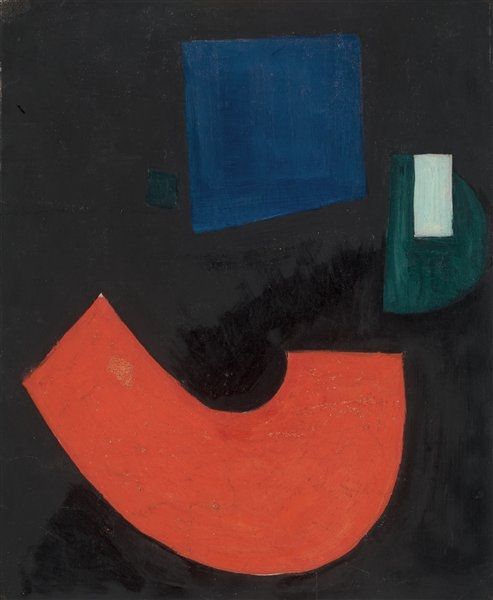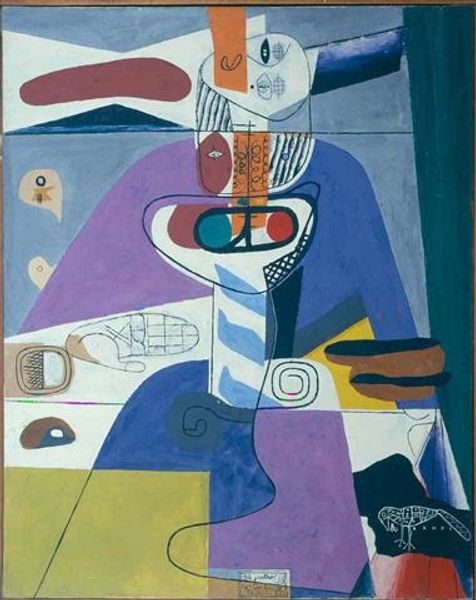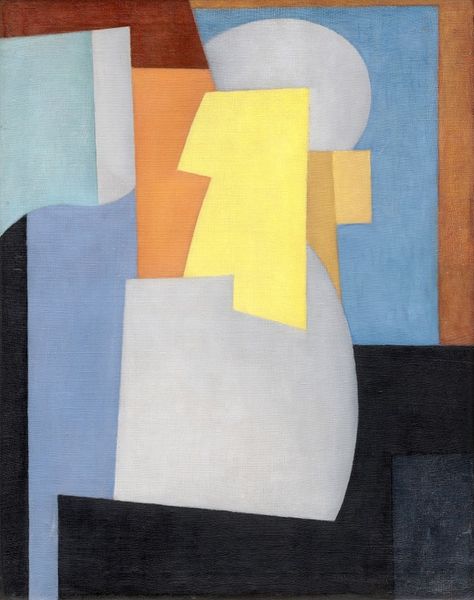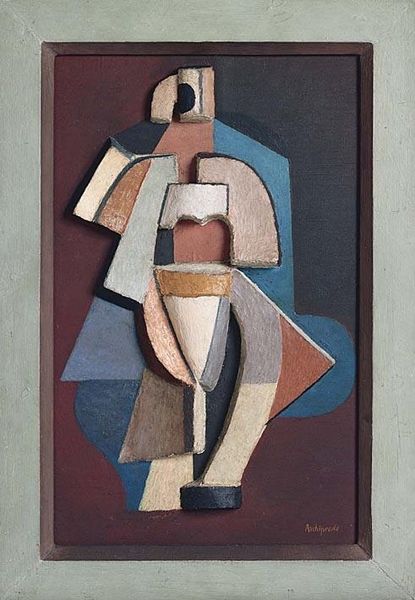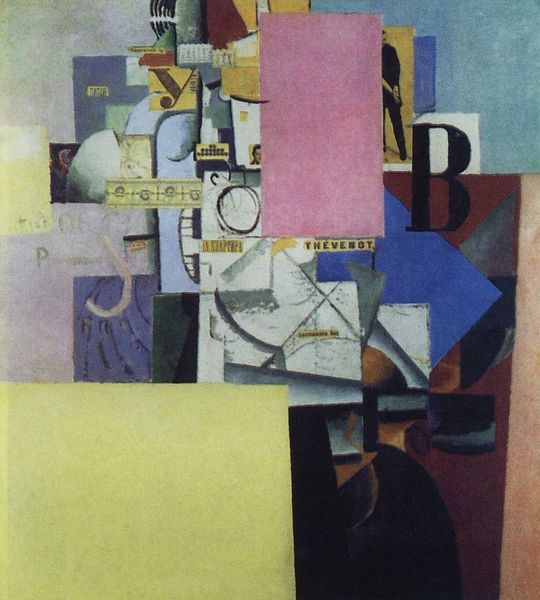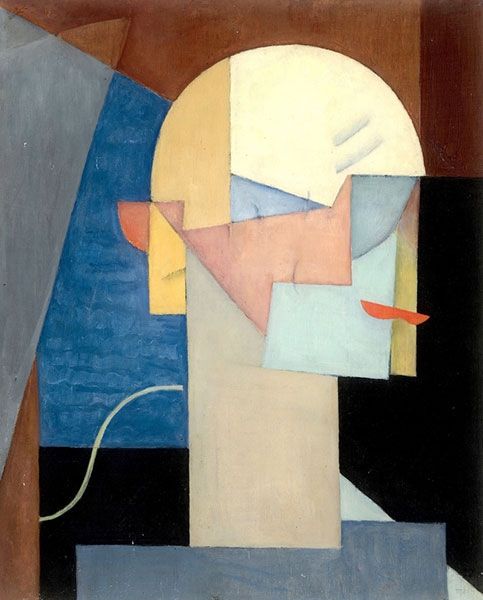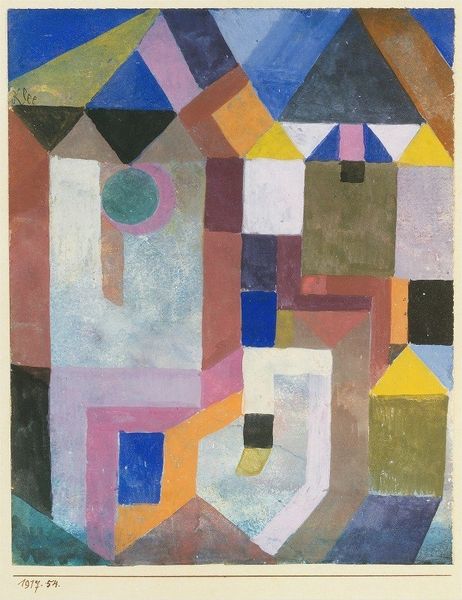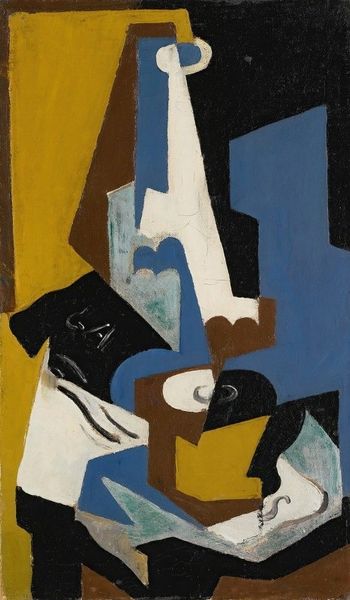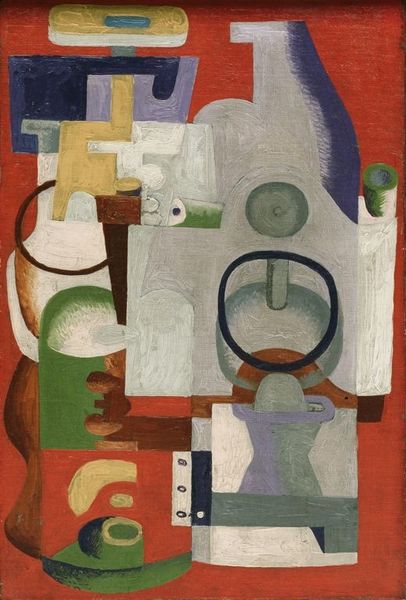
painting, oil-paint
#
cubism
#
painting
#
oil-paint
#
form
#
oil painting
#
geometric
#
abstraction
#
modernism
Dimensions: overall: 55 x 33.1 cm (21 5/8 x 13 1/16 in.) framed: 70.1 x 48.2 x 4.4 cm (27 5/8 x 19 x 1 3/4 in.)
Copyright: National Gallery of Art: CC0 1.0
Editor: This is Jacques Lipchitz’s “Still Life” from 1918, rendered in oil paint. At first glance, the geometric shapes seem almost playful, but something about the limited color palette gives it a contemplative mood. How do you interpret this work? Curator: It’s a fascinating piece, isn't it? Given its Cubist style, consider the fractured perspective: Lipchitz isn't just depicting objects but also how we perceive objects. Notice the bottle, rendered almost as a monolith – a symbol, perhaps, of sustenance and stability amidst the chaos of World War I. Do you see how the objects are simplified, almost archetypal? Editor: Yes, the bottle is very prominent. It almost feels totemic. And the colors, as I mentioned, contribute to that serious feeling, even if the shapes themselves feel somewhat lighthearted. Curator: Precisely. And that juxtaposition is key. The abstracted forms invite us to look beyond the literal, delving into deeper meanings. Think of the circle motif throughout: echoing wholeness, unity… perhaps a yearning for resolution? Lipchitz created it after arriving in Paris, fleeing the first world war. Editor: So, it’s almost a symbol of hope and peace amidst all that conflict? Curator: One could certainly interpret it that way. The simple forms, almost childlike in their execution, suggest a desire to rebuild, to start anew. What did you get most from viewing this painting? Editor: That it's much more than just shapes on a canvas; there's real emotional weight conveyed through the symbols. Curator: Indeed. Lipchitz provides us a window into a world grappling with profound change, finding solace in the fundamental building blocks of form and meaning.
Comments
No comments
Be the first to comment and join the conversation on the ultimate creative platform.
